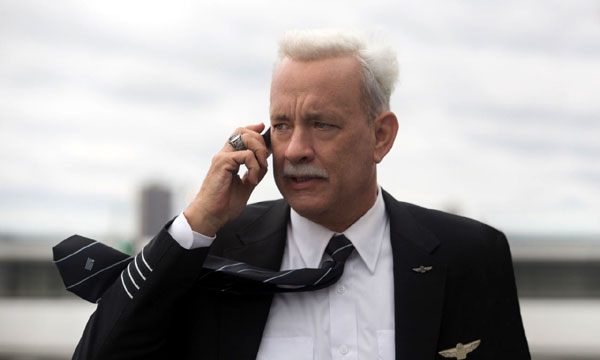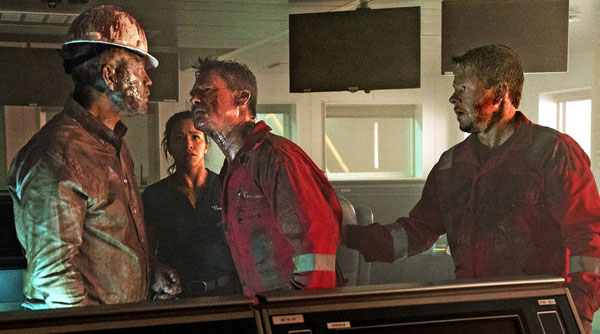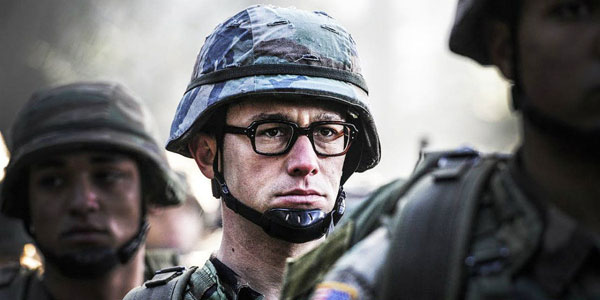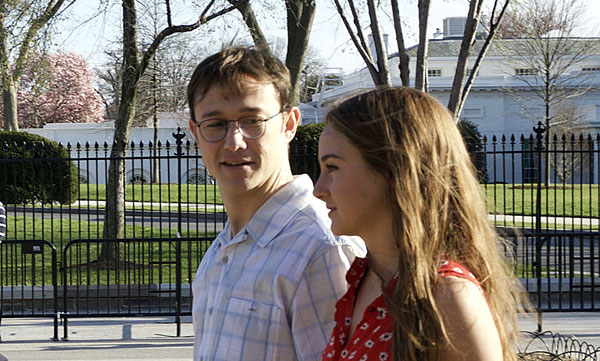|
Three new movies—Clint Eastwood’s Sully, Peter Berg’s Deepwater Horizon and Oliver Stone’s Snowden—are
portraits of heroes in different contexts. The first film is about the cool-headed valor of one man in preventing disaster. The second is about the courage of people
trapped in a terrifying, unimaginable conflagration. The third—much more controversial than the others—is about the heroism of the lone whistleblower in alerting
the world to illegal actions taken by his own government.
Over the past few years, airline pilot Capt. Chesley “Sully” Sullenberger has become the image of the calm, soft-spoken,
self-deprecating hero. He achieved that through his actions on Jan. 15, 2009, when he safely landed US Airways Flight 1549 in the Hudson River after both airplane engines
were destroyed by a flock of geese. All 155 people onboard survived.

Sully’s actions seem unambiguously heroic to us now, yet most of Sully—directed by Eastwood from a screenplay by Todd
Kormanicki—is about the efforts of the National Transportation Safety Board (with board members played by Anna Gunn and
Jamey Sheridan, among others) to prove that Sully (Tom Hanks) was guilty of pilot error. Much of the film takes place in NTSB
board rooms and hearing rooms, as expert after expert testifies that Sully could easily have made it back to LaGuardia, the
airport from which the flight took off, or the closer Teterboro Airport in New Jersey.
The actual crash of Flight 1549 forms the middle of Sully, as well
as a portion of the end. This footage is every bit as exciting as we could hope, thanks to Eastwood, his usual cinematographer
Tom Stern, film editor Blu Murray, production designer James J. Murakami and a shipload of special and visual effects experts.
The acting is also faultless, starting with Tom Hanks, who was the absolutely perfect choice to play Sully. At least since Apollo 13, Hanks has been the go-to guy for a certain type of American
hero previously exemplified by Jimmy Stewart and Henry Fonda. Like Stewart and Fonda, Hanks has a quiet, human-scale dignity that is magnificently compelling.
Unfortunately, because Sully concentrates so much on those who doubted its main character, the film is too dour. It doesn’t
give us the inspirational lift we hope for at the end. It does show us touching footage of the real Sully and his wife Lorraine
greeting the survivors of Flight 1549 at a reunion in an airplane hangar in Florida, where the actual airplane is stored. But that
doesn’t make up for what the film lacks.

The tone of Sully suits both the character of its protagonist—a man too modest and dignified to blow his own horn loudly—and
also the Stoic, downbeat tone of the usual Clint Eastwood film. But the film needed to be just a little less muted.
It hurts the film that Sully and Lorraine (Laura Linney) are never seen together. Lorraine is seen exactly three times in Sully, each
scene consisting of an anguished phone call to her husband. This makes the film seem chillier than it should, even somewhat
disembodied. Peter Berg and screenwriters Matthew Sand and Matthew Michael Carnahan don’t make that mistake in Deepwater Horizon. We see Deepwater Horizon electronics
expert Mike Williams (Mark Wahlberg, also one of the film’s producers) and his wife Felicia (Kate Hudson) with their small
daughter on the morning he ships out to the gigantic oil rig off the coast of Louisiana. We also see crew member Andrea Fleytas
(Gina Rodriguez) with her husband, trying to get her old car to start so she can get to work. Even if it’s in thumbnail sketches,
Berg and his screenwriters make sure the audience feels these are real people with real lives being put at outrageous, unnecessary risk.
Deepwater Horizon is a skillful, tense and thrilling recreation of the April 20, 2010 disaster, which killed 11 men and caused more
than 200 million gallons of oil to spill into the Gulf of Mexico. We see the events leading up to the explosion, with BP bigwigs
Donald Vidrine (John Malkovich) and Bob Kaluza (Brad Leland) dismissing the concerns of safety chief Jimmy Harrell (Kurt
Russell) that Deepwater Horizon has serious structural damage. From there, as with the different cinematic iterations of the Titanic,it’s just a matter of watching the characters pursue their
separate paths before and after the conflagration begins. We can even find parallel characters between Deepwater Horizon and the Titanic—Mike Williams with Charles Lightoller, Jimmy
Harrell with Thomas Williams, Donald Vidrine with Bruce Ismay, and so on.

The last half of Deepwater Horizon portrays the explosion and the crew’s scramble for safety with terrifying verisimilitude.
Again we must bow to the skill of the director and his crew—cinematographer Enrique Chediak, film editors Gabriel
Fleming and Colby Parker Jr., production designer Chris Seagers, and once again a mind-boggling list of special, visual and sound
effects experts. As in some recent films, there are moments in Deepwater Horizon in which it’s hard to tell exactly what is
happening to whom; unlike those other films, there are excellent reasons for that in Deepwater Horizon. Few films have been so
effective in depicting scenes of chaotic, mortal danger.
The actors are very good, especially Russell, who once again gives an Oscar-worthy performance the Academy will almost
certainly ignore. Russell’s Harrell and Wahlberg’s Williams are the biggest heroes in Deepwater Horizon, displaying calm,
sound judgment under the most perilous conditions imaginable. (Harrell’s plight is especially horrible; I will not reveal it here,
but it will make you cover your eyes.) Deepwater Horizon ends with a tribute to the men who died that night in April 2010, a
moving and appropriate gesture showing that the filmmakers have both their hearts and their heads in the right place.
Whether Edward Snowden had, or has, his heart and mind in the right place is a matter of heated debate, three years after he
released thousands of classified documents showing that the
U.S. government was spying on citizens on a heretofore
unimagined scale. Some see him as a hero, pure and simple; some see him as a traitor, pure and simple; many see him
somewhere on a nebulous scale between the two extremes. Oliver Stone sees him emphatically in the first category, and Snowden—directed by Stone from a screenplay by Stone and
Kieran Fitzgerald—is a paean to a young man Stone presents as a courageous whistleblower.
There was already an Oscar-winning documentary about Snowden, Laura Poitras’ Citizenfour. Snowden begins with the making of Citizenfour, in June 2013, as Snowden (Joseph
Gordon-Levitt) arranges a clandestine meeting at a Hong Kong hotel with Poitras (Melissa Leo) and journalists Glenn Greenwald (Zachary Quinto) and Ewen MacAskill (Tom
Wilkinson). Snowden knows these three are the world’s top investigative journalists covering the excesses of government
intelligence agencies, and he is just about to drop in their laps the biggest story of their lives.
Stone intersperses the scenes of Snowden and the journalists in his hotel room with the story of Snowden’s life—how he was
cheated out of a military career when he broke both legs in basic training, and how he gravitated toward a career in intelligence work.

Almost immediately, Snowden is torn between his gung-ho boss, Corbin O’Brian (Rhys Ifans) and a cynical agency burnout, Hank
Forrester (Nicolas Cage). He becomes steadily more disillusioned as he accepts intelligence posts around the world,
working for the NSA and later for private contractors. Snowden gets his first real sighting of villainy in the actions of a loose
-cannon NSA agent (Timothy Olyphant), and becomes further disillusioned after his posting in Hawaii, where he learns the
government is leaning on every major Internet carrier to gather information on all their subscribers.
The central flaw of Snowden is that it wears its self-congratulation on its sleeve—like most of Stone’s films—with
very little compensatory excitement, which is unusual for Stone. The story of Snowden’s radicalization is disappointingly rote,
even as Gordon-Levitt brings a steady, touching honesty to his portayal of Snowden. It is Gordon-Levitt who keeps us
interested in the movie, as well as the uniformly excellent cast that also includes Shailene Woodley as Snowden’s loyal girlfriend, Lindsay.

It’s not giving away anything to say that how well you like Snowden the movie depends strongly on how much you admire
Snowden the man. Here, I must admit to ambivalence—as many others, including Bernie Sanders, have done. I am a kid from
small-town Ohio, the son of two World War II military veterans, and that colors my feelings about anyone who reveals
government secrets. If Snowden’s release of documents led to the death of even one American soldier or agent, a charge of
treason is eminently justified. Snowden’s associations with Julian Assange and Vladimir Putin—even if overblown—don’t
give me confidence in him. But with the news of skullduggery and collusion within the FBI just before the recent election—just
to name one instance in a long and depressing series--the value of whistleblowers cannot be denied.
|